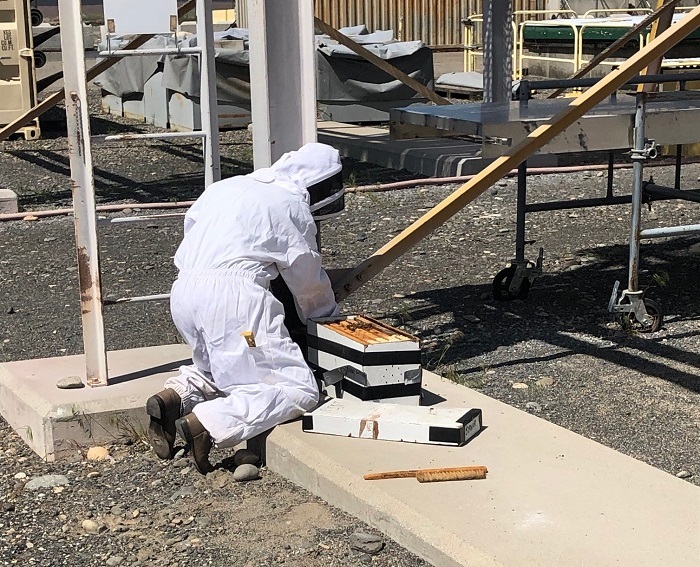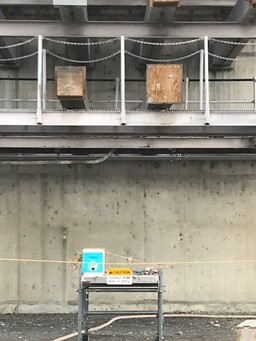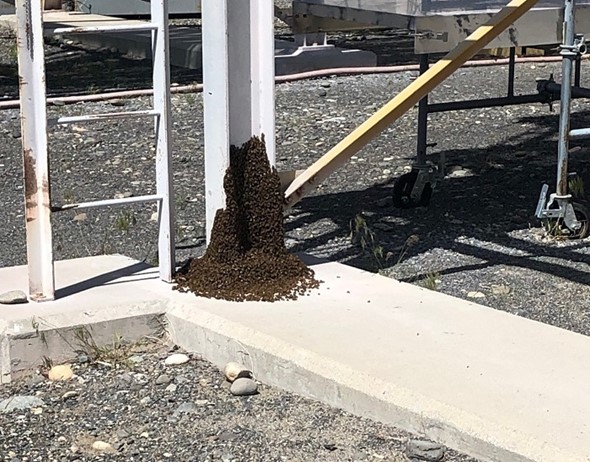
Cynthia Synar, a beekeeper and planner with CPCCo, places a swarm of bees in a box. (Photo: DOE)
The CPCCo team stopped work and contacted ecological experts with fellow site contractor Hanford Mission Integration Solutions to determine if the bees could be saved. The hives were located inside compartments of one of the structures, limiting access to remove the bees directly. The presence of asbestos also posed some potential hazards. After discussing several options, workers decided to try to capture the bees as they naturally left the hive.
About bees: “We weren’t sure how well our plan would work, but we thought it was our best shot at success,” said Cynthia Synar, a planner with CPCCo who is also a beekeeper. “Bees are vital to the health of Hanford’s ecosystems, pollinating the native grasses and other plants across the site’s semiarid shrub-steppe landscape."
The team placed bee traps—small boxes baited with attractant—near the structure and waited. In mid-May, a worker noticed a swarm near one of the bee boxes. Synar carefully placed the bees into the box and let them settle overnight. The next morning, she relocated them away from cleanup activities.
“We were so excited to be able to give them a new home,” Synar said. “They were so docile and easy to work with. They just went with the plan.”

Workers placed bee boxes and attractant below a structure slated for demolition in Hanford’s K Reactor Area in hopes of capturing native bees when they swarmed from a colony. (Photo: DOE)
Work will continue: With demolition activities on the structure set to resume soon, Synar hopes to keep the traps in place for as long as possible or until the rest of the bees decide to relocate inside them.
“I’m impressed with the innovation of our joint contractor team to relocate these native bees,” said Paul Pak, head of the Richland Operations Office Environmental Compliance Division. “Projects like this also reinforce the importance of our wildlife management program to monitor and protect animals that call the Hanford Site home.”
About Hanford: The Hanford Site sits on 586-square-miles of shrub-steppe desert in southeastern Washington state. Beginning in 1943, the site was used to produce plutonium for the World War II effort. After a short lull, production was ramped up in 1947 because of the Cold War and continued until 1987 when the last reactor ceased operation. The weapons production processes left solid and liquid wastes that posed a risk to the local environment including the Columbia River. In 1989, the DOE, the Environmental Protection Agency, and Washington state's Department of Ecology entered into a legally binding accord, the Tri-Party Agreement, to clean up the site.












